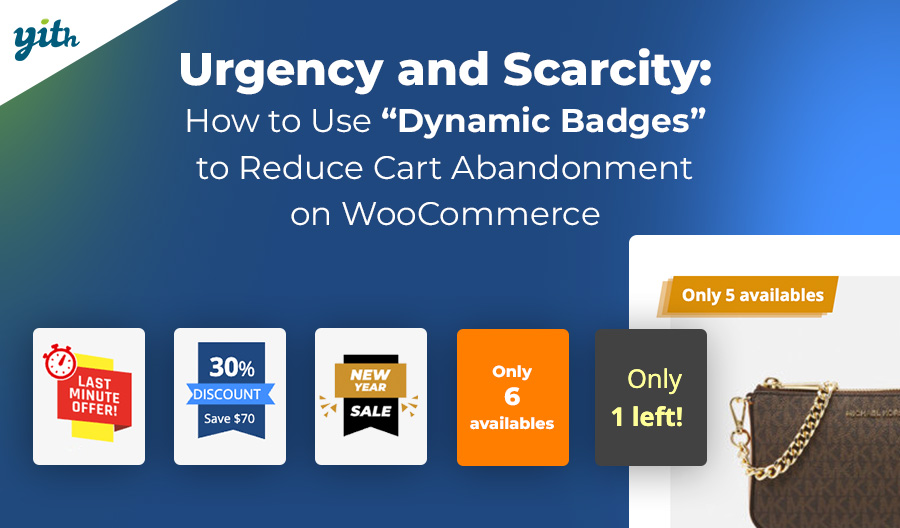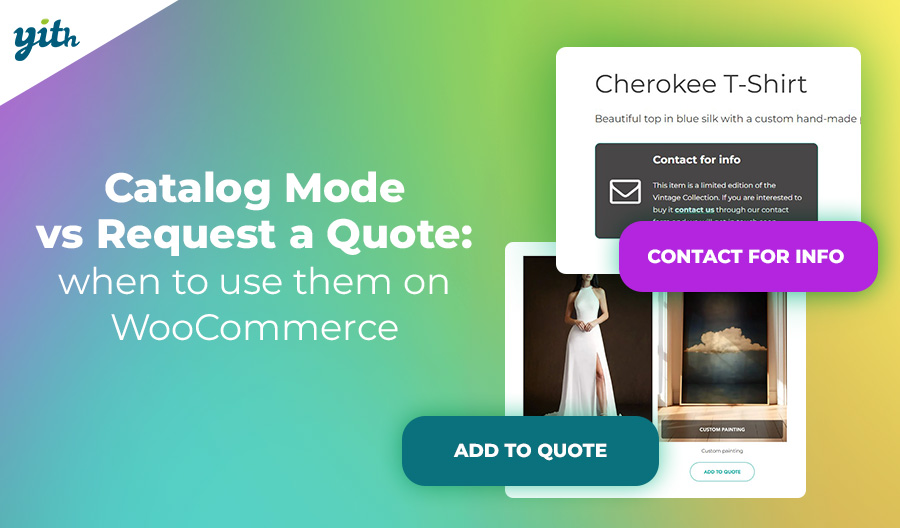Unique Value Proposition (UVP) is one of the most important yet least understood aspects of a business, whether online or offline. In this short guide, we will explore what a value proposition is, why it’s important for your business, and how you can improve it on your eCommerce store.
Table of contents
- What Is the Unique Value Proposition?
- Why Is Unique Value Proposition Important?
- Characteristics of a Good Value Proposition
- How to Create a Unique Value Proposition
- Unique Value Proposition Examples:
- Where Should the Unique Value Proposition Be Inserted?
- How to Measure the Success of Your Unique Value Proposition
- Unique Value Proposition and Differentiation
- Conclusion

What Is the Unique Value Proposition?
Let’s start with its definition. UVP is a statement that powerfully and immediately conveys what makes your business unique. It’s a way to communicate this information quickly and easily to new customers.
The question you need to ask yourself is: “In a world with millions of other alternatives, why should customers choose my store and my products?“
If you don’t know the answer, it will be difficult to convince customers.
But don’t worry! Let’s try to master this tool.

Why Is Unique Value Proposition Important?
Having a clear understanding of what you offer and what your business mission is can be important in several ways. Let’s look at some of the benefits it can get you:
- Differentiate yourself from the competition – Mind you, the online marketplace is extremely crowded, and standing out among similar stores is far from easy. However, many of these businesses do not communicate well with their customers, and this is where you can gain an edge. This can be much more effective than mind-boggling promotions or discounts because it grabs the customer’s attention as soon as they arrive on the site (or even earlier by appearing in search engine results).
- Marketing and promotions – Having a precise and clear idea of what you offer can help you manage your marketing strategies better, reach the right target audience, and create promotions consistent with your brand. This will help you improve your positioning in your niche.
- Increase conversions – Good communication satisfies customers, converts more of them by resolving doubts, and increases customer lifetime value.
So, what does a unique value proposition need to look like to achieve these results?

Characteristics of a Good Value Proposition
Unique value propositions are very popular online, but it is difficult to find a high-quality value proposition that brings the best results. What are the characteristics of a good UVP?
- Unique – Of course, this concept is implied by the term itself, but it is important to reiterate. Often, out of convenience, fear of alienating clients, or laziness, generic value propositions are chosen as they can convey many meanings. However, this is a huge mistake. The more distinct and unique your product is, the greater your distance from the competition will be.
- Consistent – A unique UVP is of little use if its message is not reflected in your products or services. Similarly, it must be direct: it should clearly and concisely communicate what benefits customers can get from your website without being vague or abstract. And, more importantly, it should not contain unattainable promises.
- Engaging – The average potential customers are not looking for products or services, but solutions to their problems. Declaring yourself the ally that solves customers’ problems with a solution in a strong value proposition can make all the difference.
- Short and clear – An effective value proposition statement is usually short and clear, but it is much more difficult to create an impactful value proposition with a limited number of words. In any case, avoid redundant, abstract, or complex messages. Use clear communication to express what you can do for the client.
Now, let’s go over some tips on how to create a unique value proposition.

How to Create a Unique Value Proposition
What should you pay attention to when creating yours? Here are some pointers that can help:
- Know your target audience thoroughly – As with promotional strategies and business plans, the first step is always toward your target market. Understanding your target audience allows you to know how to address them, where to place your unique value proposition, how to communicate with customers, which psychological and behavioral mechanisms to pay attention to, and what to say. As always, analyze your target market in detail.
- Analyze your customers’ pain points and needs – As we suggested earlier, knowing your audience behavior is the most important step in creating an engaging unique selling proposition. You should do customer research, gather feedback, and pay special attention to the types of searches made by the target customers. Keywords are not only for indexing your content in search engines; they are also useful for understanding what your customers need.
- Study your competition and identify your points of difference – The three golden rules of business are: know yourself, know your audience, and know your competitors. Analyzing your competitors’ behavior will help you see what the most successful ones focus on. You can also learn from the least successful ones. This will help you differentiate yourself from them. Remember, the value you offer must be “unique.”
- Define the unique value that only your product or service can offer – Once you have gathered all the above information, you can offer a solution tailored to your customers’ needs and incorporate it into your unique value proposition.
- Simplify the message so it is immediately understandable – Ideally, a great value proposition should consist of four or five words. The longer it is, the less effective it is.
The best way to understand a concept, however, is to see it at work. Let’s look at some examples.

Unique Value Proposition Examples:
We always recommend teaching through examples because they are much more effective at sticking in our memory. There are countless unique value propositions out there, but let’s look at a few.
- Slack: “Slack is where work happens.” This unique value proposition distinguishes Slack’s competitive advantage from other messaging systems by focusing on the working world niche. Rather than embracing the widest possible target audience, Slack specializes in providing a reliable and fast work environment that can accommodate teams of all sizes. “Slack is where work happens” indicates not only the central point of communication for many businesses but also that Slack is not merely an accessory to your business; it is its core. By saying that work happens directly on Slack, a sense of effectiveness and zero distraction is conveyed in the brand offering. Five words, one powerful message.
- Mailchimp: “Turn emails into revenue.” Five words, another super-effective message! This value proposition addresses the primary need of those who want to create an email chain, whether for a launch strategy or a newsletter. In many cases, the ultimate goal is to increase sales, and Mailchimp offers a simple, effective solution: send an email and generate revenue. Brilliant! They could have written long descriptions highlighting all the strengths and features of their service, but that would not have been as effective. There is a time and place for that, too.
- Evernote: “Simplify your life.” Evernote is a note-taking app. Most people look for an app like this one because they want to organize some aspects of their lives or because they want an easy, convenient tool to reorganize their ideas. Moreover, these four words can apply to any use you will make of the app, whether personal or professional.
- Uber: “Earn money by driving.” Four words that immediately frame what potential customers (Uber drivers) are looking for. In other words, it’s a way to earn money by driving without overcomplicating the concept. Interestingly, Uber has two different value propositions: one to attract drivers and one to attract customers. A unique value proposition for customers could focus on the service’s convenience, ease of booking, and coverage. A message such as “Get a ride now” could work by going directly against the unnecessarily complex process of booking a cab.
Once you have identified your unique value proposition, it is important to determine where to place it on your website.

Where Should the Unique Value Proposition Be Inserted?
Although it’s important, the unique value proposition shouldn’t be placed just anywhere on the website. Technically, you can do that, but it would greatly reduce its effectiveness
You will find many online guides on value propositions’ placement, and the following are generally recommended:
- At the top of the home page, also called the hero section.
- In the headers of product pages
- In sidebars
- In the footer
- In the “About Us” section
Even though these are often presented as equally important, the unique value proposition should be visible immediately upon arriving on the corresponding landing page to maximize its impact. Ideally, it should be the first thing customers notice, placed prominently at the top of the homepage, written in a clear and visually striking way.
Of course, it can also be placed elsewhere, such as on the “About Us” page, where you can expand on the concept, or in the footer of the page as a reminder. However, these are all secondary solutions to the primary one.

How to Measure the Success of Your Unique Value Proposition
Like many other business strategies and tools, it’s important to measure the effectiveness of your value proposition. But how do you do that?
The most direct way is to ask for feedback via surveys and polls. However, there are other tools based on target customer behavior.
For example, you can measure the conversion rate before and after implementing a new value proposition. Similarly, you can analyze the bounce rate to see how many customers leave your site after opening the homepage and how much they navigate within it.
If you associate the value proposition with a call to action, measuring the number of clicks on the button can also provide an excellent metric for comparison, especially when contrasted with a period without a value proposition or with a different one.
For this reason, we suggest A/B testing to measure the specific benefits of using different value propositions.

Unique Value Proposition and Differentiation
Remember that your value proposition must be unique. Pay attention to the following:
- Solve a specific problem or need of your customers.
- Focus on a primary benefit that differentiates you from your competition.
- Leverage your brand’s strengths and uniqueness.
Conclusion
In a sea of alternatives, capture your potential customers’ attention immediately with an effective unique value proposition to get higher sales conversions and reduce your bounce rate!



